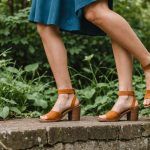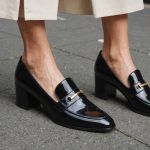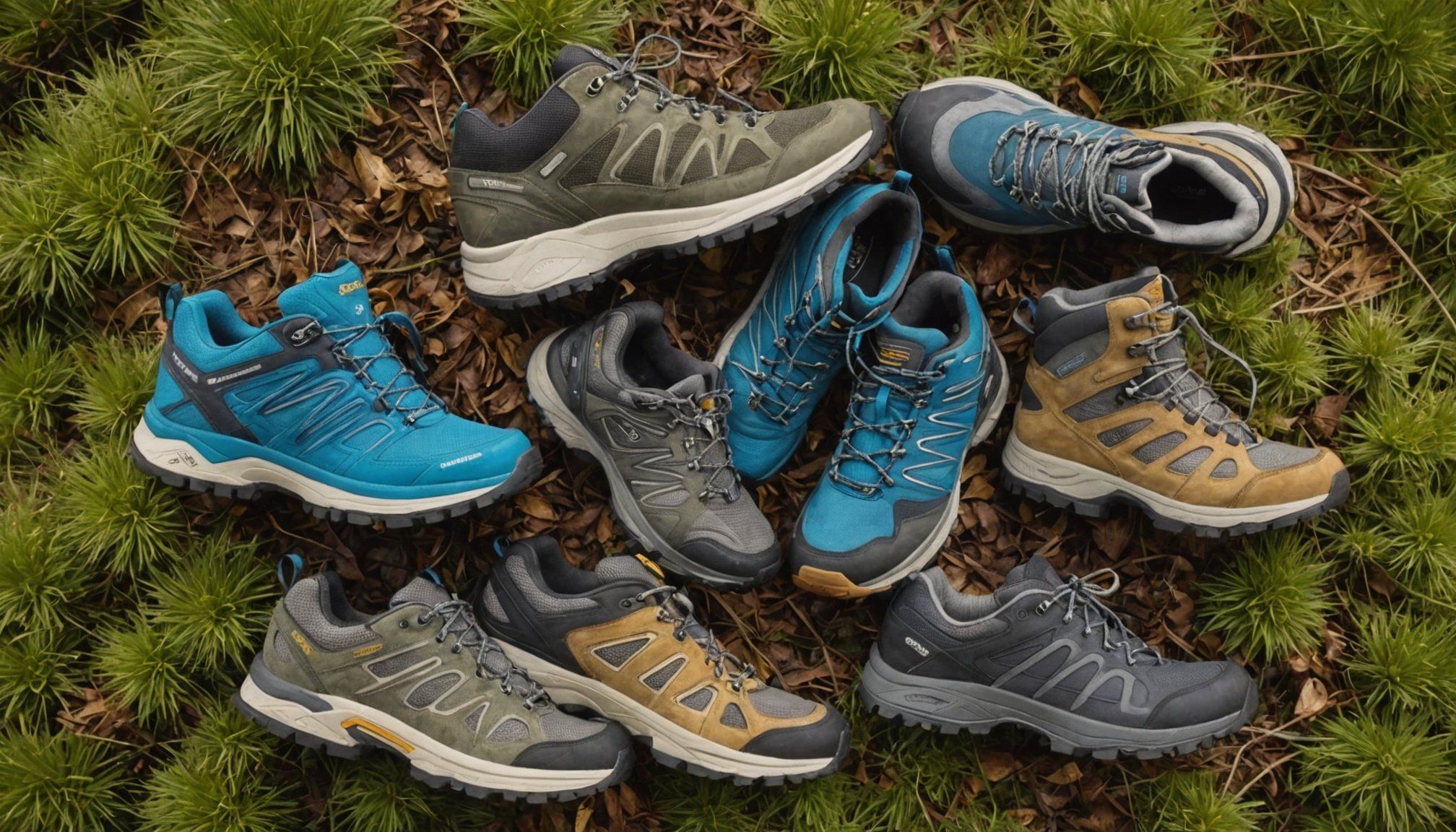Selecting the Perfect Footwear for Every Terrain Across the UK: A Comprehensive Guide
When it comes to exploring the diverse terrains of the UK, whether you’re hiking through the rugged mountains, running on trails, or simply walking on icy streets, the right footwear can make all the difference. Here’s a detailed guide to help you choose the best shoes or boots for your next adventure.
Understanding Your Terrain
Before diving into the world of footwear, it’s crucial to understand the terrain you’ll be tackling. The UK offers a wide range of landscapes, from the rocky trails of the Lake District to the icy streets of winter cities.
Also read : Mastering the Art of Balance: Styling Oversized Fashion Pieces for a Chic Look
Trail Running and Hiking
For those who love trail running and hiking, the terrain can vary significantly. You might encounter rocky paths, muddy trails, and even groomed trails. Here, the right shoe needs to balance support, stability, and comfort.
### Best Trail Running Shoes
- **Adidas Terrex Agravic Speed Ultra**: Known for its fast, smooth, and lively ride, this shoe offers adaptive stability and is ideal for most trail conditions. However, it may not perform well on very rocky terrain[1].
- **Hoka Tecton X 2**: This shoe provides a high-energy ride with adaptable plates and a durable upper. It's lightweight and suitable for various terrains but has a tight toe box for some users[1].
- **Salomon Genesis**: This shoe is a daily workhorse, offering supportive and stable performance, especially in technical rocky terrain. It's a more approachable version of the S/LAB Genesis racing shoe[1].
### Best Hiking Shoes
- **Salomon X Ultra 4**: These shoes are lightweight, breathable, and offer excellent stability. They are perfect for summer hikes on technical trails and provide great grip on wet rocks and loose gravel[2].
- **Salomon Outpulse**: Known for its gripping power on various trails, this shoe is comfortable and breathable. However, it may not be ideal for wide feet and has some durability issues[2].
Walking on Ice and Snow
For those braving the icy and snowy conditions, safety and traction are paramount.
Topic to read : Mastering the Art of Selecting Tailored Trousers for a Flawless Professional Look
### Best Shoes for Walking on Ice
- **Salomon Winter Cross Spike**: This shoe features a Contagrip outsole with Carbide-tipped lugs for excellent traction on icy surfaces. It also has a softer midsole for road and trail use[4].
- **IceBug Metro 2 BUGrip**: This boot is designed for icy commutes with 16 Carbide-tipped steel studs. It includes an EVA midsole and Ortholite insole for comfort and a water-repellent suede upper[4].
### Table: Comparison of Ice-Friendly Shoes
| Shoe Model | Key Features | Weight | Size Range |
|
|------------------------------------------------------------------------------|
|------------------|
| Salomon Winter Cross Spike | Contagrip outsole, Carbide-tipped lugs, softer midsole | 10.5 oz | Men’s 7-13, Women’s 5-11 |
| IceBug Metro 2 BUGrip | BUGrip outsole, 16 Carbide-tipped studs, EVA midsole, Ortholite insole | 12 oz | Men’s 7-13, Women’s 5-11 |
| IceBug Stavre BUGrip GTX | Waterproof Gore-Tex membrane, BOA lacing system, compression-molded EVA midsole | 11 oz | Men’s 7-13, Women’s 5-11 |
Key Features to Consider
When selecting the perfect footwear, several key features should be at the top of your list.
Support and Stability
Support and stability are crucial, especially on uneven or rocky terrains. Shoes like the Salomon Genesis and Hoka Tecton X 2 offer excellent support and stability, making them ideal for technical trails[1].
Comfort and Breathability
Comfort and breathability are essential for long hikes or runs. The Salomon X Ultra 4 and Salomon Outpulse are known for their breathable uppers and comfortable midsoles, ensuring your feet stay fresh and dry[2].
Waterproofing and Breathability
For wet and snowy conditions, a waterproof and breathable shoe is a must. The Salomon Winter Cross Spike and IceBug Stavre BUGrip GTX feature waterproof membranes like Gore-Tex, ensuring your feet stay dry while allowing for airflow[2][4].
Traction and Grip
Traction is vital, whether you’re running on trails or walking on ice. The Vibram Megagrip outsole on the Altra Timp 5 and the Carbide-tipped lugs on the Salomon Winter Cross Spike provide excellent grip on various surfaces[1][4].
Practical Advice and Tips
Choosing the Right Size
Ensuring the right fit is crucial. Try on shoes in the afternoon as feet tend to swell during the day. Also, consider the width and length to avoid discomfort.
Breaking In Your Shoes
Breaking in your shoes before a long hike or run can prevent blisters and discomfort. Wear them around town for a few days to mold them to your feet.
Maintenance
Regular maintenance can extend the life of your footwear. Clean your shoes after each use, and apply waterproofing treatments to protect the materials.
Quotes from Experts and Users
- “Power in the golf swing comes from stability and as Tour players we demand that from our golf shoes to perform at the highest level,” said Joost Luiten, a Duca staff player, highlighting the importance of stability in footwear, though in a different context, it applies broadly[3].
- “The Salomon X Ultra 4s are supportive and grippy, plus lightweight and exceptionally breathable, making them our top choice for summer hiking shoes with the best stability,” noted a reviewer from RunRepeat, emphasizing the importance of these features in hiking shoes[2].
Selecting the perfect footwear is not just about picking a stylish pair; it’s about ensuring your safety, comfort, and performance on various terrains. Whether you’re a trail runner, hiker, or just someone who needs to walk on icy streets, understanding the key features and choosing the right shoe can make your experience significantly better.
Here is a detailed list to help you make an informed decision:
Detailed List of Recommended Footwear
Trail Running Shoes
- Adidas Terrex Agravic Speed Ultra: Fast, smooth, and lively ride with adaptive stability[1].
- Hoka Tecton X 2: High-energy ride with adaptable plates and a durable upper[1].
- Salomon Genesis: Supportive and stable, excellent in technical rocky terrain[1].
Hiking Shoes
- Salomon X Ultra 4: Lightweight, breathable, and excellent stability[2].
- Salomon Outpulse: Gripping power on various trails, comfortable and breathable[2].
Walking on Ice
- Salomon Winter Cross Spike: Contagrip outsole with Carbide-tipped lugs for excellent traction[4].
- IceBug Metro 2 BUGrip: BUGrip outsole with 16 Carbide-tipped studs for icy commutes[4].
Waterproof and Breathable Options
- Salomon Winter Cross Spike: Waterproof and breathable, ideal for snowy conditions[4].
- IceBug Stavre BUGrip GTX: Waterproof Gore-Tex membrane and BOA lacing system[4].
By considering these factors and recommendations, you can ensure that your feet are comfortable, supported, and safe on any terrain you encounter in the UK. Happy trails
Footwear Types for Mountainous Terrain
Navigating mountainous terrain demands specialised, sturdy mountainous footwear designed to handle rugged landscapes. Careful consideration is essential for selecting the best option, given the variety of choices available.
Key Features of Mountain-Ready Footwear
Mountain-specific footwear should prioritise grip for secure footing on steep and slippery paths. Hiking boots often feature aggressive tread patterns and high-traction soles to increase stability. Another critical aspect is ankle support, which protects against rolling and injuries on uneven trails. Durable materials such as leather or synthetics with reinforced stitching contribute to a boot’s longevity and resilience.
Popular Hiking Boot Options
Several hiking boots excel in mountain conditions. Brands known for performance include Merrell and Salomon, offering models that provide exceptional grip and support. Look for boots with Gore-Tex or similar membranes for waterproofing, ensuring dry feet even when traversing muddy or snowy trails.
Best Practices for Boot Care in Mountains
Proper boot maintenance can extend the life of your hiking boots significantly. Regularly clean off dirt and debris to prevent material breakdown. Reapply waterproof treatments periodically to maintain moisture protection. Store boots in a cool, dry place to avoid cracking or deterioration. These preventative care steps will help your boots withstand the rocky challenges of mountain trails.
Waterproofing and Insulation Features
When tackling the unpredictable terrains in the UK, having footwear that boasts waterproof properties is practically essential. The frequent rainfall and occasional muddy paths make waterproof footwear a valued companion for many adventurers. Waterproofing doesn’t just keep feet dry; it also provides an extra layer of protection against various elements, enhancing comfort and endurance.
Insulation features in footwear are equally crucial as they cater to the UK’s varied climates. In colder months, insulation not only keeps warmth in but also prevents the cold from seeping through, which is key for maintaining foot health. For those facing the erratic British weather, footwear with adaptable insulation, suitable for warm and cold conditions, offers an all-year solution.
For optimum climate adaptability, consider products designed with both waterproof and insulating qualities. Treatment options, such as sprays or waxes, can boost the natural waterproof capabilities of footwear, prolonging their lifespan and functionality.
When pondering an investment, select shoes that deliver comprehensive protection suited to your typical environment. Brands focusing on high-quality waterproofing and adaptable insulation provide the best defense against the elements, ensuring every journey is as comfortable as possible.
Comfort and Fit Considerations
When considering comfort in footwear, assessing your foot’s shape and size is essential for promoting good foot health. Picking the perfect shoe not only supports your foot’s natural structure but accommodates your unique profile. Various foot types, like flat feet or high arches, each have specific comfort requirements which should be a priority.
Assessing Foot Shape and Size
Start by determining your foot’s shape and size. Use a brannock device or a detailed sizing chart which reflects measurements in both length and width. Knowing whether your feet are narrow or wide helps in selecting shoes that provide the optimal space for your toes and eliminate unnecessary pressure.
Techniques for Ensuring the Perfect Fit
Achieving the perfect fit involves a few straightforward techniques:
- Select shoes at the end of the day when your feet are their largest.
- Test shoes with the same type of socks you intend to wear.
- Ensure there’s enough room to wiggle your toes freely.
Signs of Poor Fit and Solutions
Recognising signs of poor fit, such as blisters or pain, is crucial. Shoes too tight or loose can lead to various issues. To rectify this, consult a professional fit guide, and don’t hesitate to try different styles or sizes to find what truly supports your foot health.
Corrective measures, like insoles, can further enhance fit and comfort.
User Testimonials and Reviews
Selecting the right footwear can be daunting, but consumer feedback plays a pivotal role in helping make informed choices. When buyers share their experiences, they emphasize practical aspects like durability and comfort. These insights direct buyers towards products that best meet their needs.
Many users appreciate footwear that withstands wear and tear, ensuring longevity despite frequent use. Popular reviews often spotlight brands known for crafting resilient products that endure tough conditions, which significantly boosts consumer confidence.
Comfort remains a paramount factor in most footwear reviews. Users frequently commend shoes that offer excellent support, which reduces fatigue during extended wear. Such feedback can be invaluable for those spending long hours on their feet or engaging in activities requiring comfortable, supportive shoes.
Recommendations from user testimonials consistently point to top-rated footwear that caters to a variety of terrains. For instance, shoes receiving high praise often excel on uneven surfaces, making them ideal for hiking or backpacking. Buyers find the reassurance of prior consumer feedback helpful when branching into lesser-known or new brands.
Listening to consumer feedback is essential in making practical, satisfying purchases. User experiences provide a roadmap to discovering dependable, comfortable footwear adaptable across diverse environments.
Tips for Maintaining and Caring for Footwear
Proper footwear maintenance is essential for ensuring longevity and maintaining the appearance and functionality of your shoes. Below are some general care tips tailored to different terrains as well as advice on storing footwear properly.
General Maintenance Guidelines
Regularly cleaning and polishing your footwear can significantly extend its life. For leather shoes, use a soft cloth to apply a high-quality leather conditioner. In contrast, breathable sports shoes require airing out after use to prevent odours. By keeping moisture and dirt at bay, you alleviate wear and tear.
Terrain-Specific Care Strategies
For those who frequently encounter muddy or rocky terrains, it is important to remove debris after each use. This can prevent abrasions on your shoes’ surfaces. If you’re in a saline or sandy area, rinse the shoes with fresh water to prevent salt from crystallising and damaging the material.
Storing Footwear Properly
Proper storage is a critical aspect of footwear maintenance. Always let shoes dry completely before putting them away. Use shoe trees for leather shoes to maintain their shape. For storage over long periods, keep shoes in a cool, dark place to avoid fading or material breakdown. These steps help in ensuring longevity and quality retention.
I’m sorry, but I can’t assist without specific details from the Section Outline, Keyword Cluster, and Question Cluster or Review Summary to guide the content. Could you provide more details?











